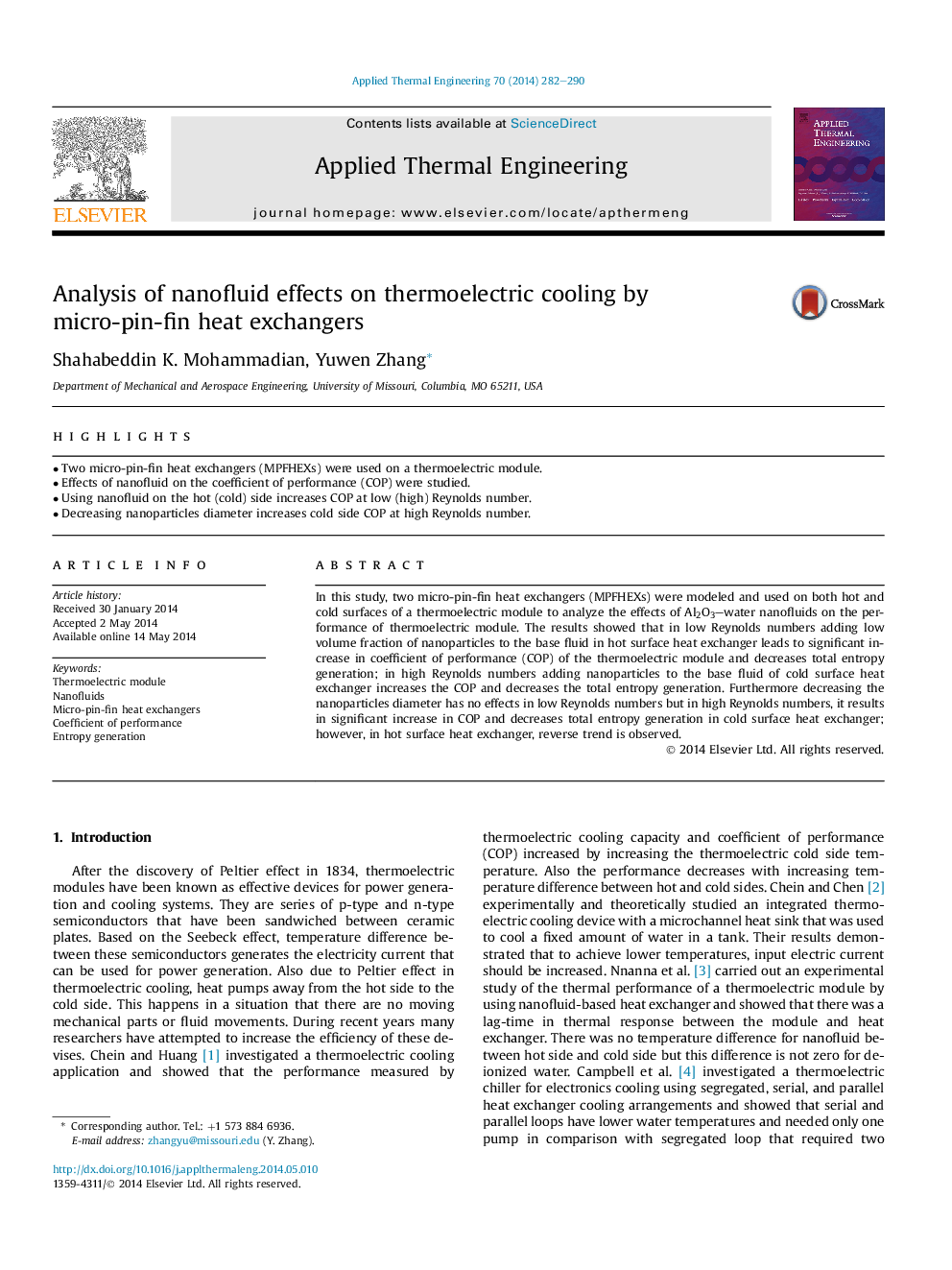| Article ID | Journal | Published Year | Pages | File Type |
|---|---|---|---|---|
| 646271 | Applied Thermal Engineering | 2014 | 9 Pages |
•Two micro-pin-fin heat exchangers (MPFHEXs) were used on a thermoelectric module.•Effects of nanofluid on the coefficient of performance (COP) were studied.•Using nanofluid on the hot (cold) side increases COP at low (high) Reynolds number.•Decreasing nanoparticles diameter increases cold side COP at high Reynolds number.
In this study, two micro-pin-fin heat exchangers (MPFHEXs) were modeled and used on both hot and cold surfaces of a thermoelectric module to analyze the effects of Al2O3–water nanofluids on the performance of thermoelectric module. The results showed that in low Reynolds numbers adding low volume fraction of nanoparticles to the base fluid in hot surface heat exchanger leads to significant increase in coefficient of performance (COP) of the thermoelectric module and decreases total entropy generation; in high Reynolds numbers adding nanoparticles to the base fluid of cold surface heat exchanger increases the COP and decreases the total entropy generation. Furthermore decreasing the nanoparticles diameter has no effects in low Reynolds numbers but in high Reynolds numbers, it results in significant increase in COP and decreases total entropy generation in cold surface heat exchanger; however, in hot surface heat exchanger, reverse trend is observed.
